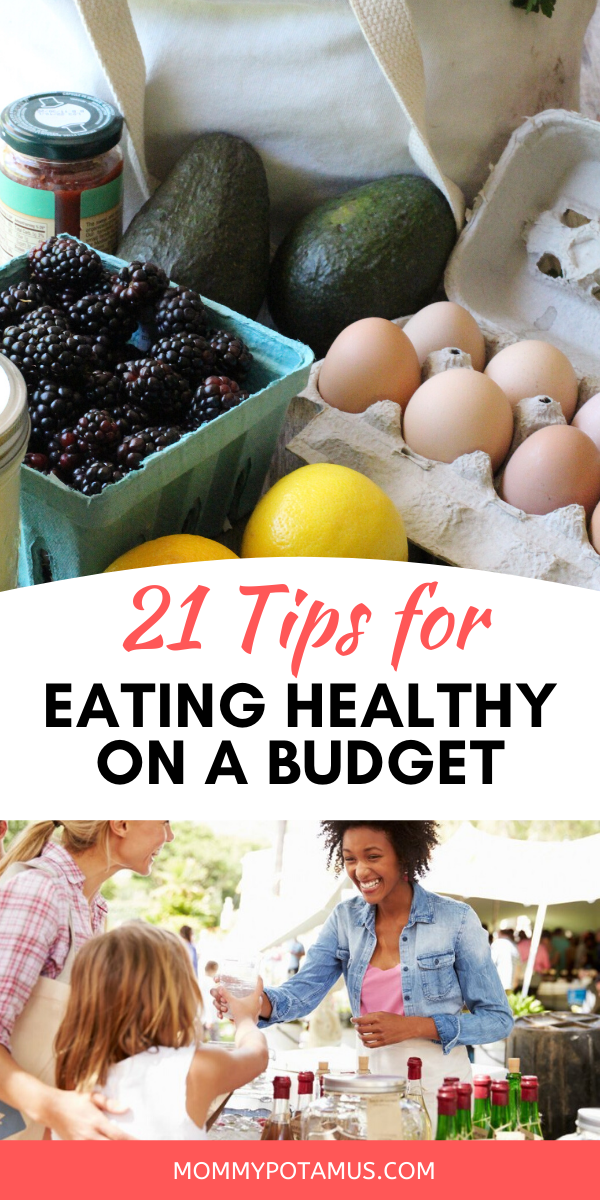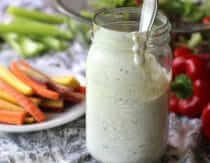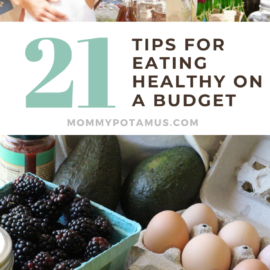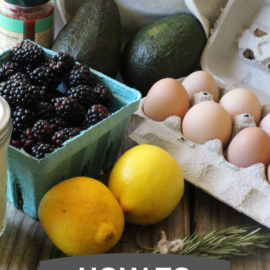
When my husband and I were newlyweds, date nights at home often involved $5 pizza and a sausage-shaped tube of enriched wheat flour, sugar, and partially hydrogenated soybean oil — aka store-bought chocolate chip cookie dough.
Back then, I thought the cost of junk food was nothing more than pennies, which I was more than happy to grab from our loose change jar.
It wasn’t until I began struggling with health issues that I realized the real cost of cheap food.
Sure, coupon gurus have shown us time and again how to get $196 in groceries for $2.33, but only by focusing on highly processed foods that are nearly devoid of nutrition. This approach has hidden costs for our health, the environment, and even the farmers we rely on to feed us not just today, but tomorrow, and next month, and next year.
Fortunately, there are ways to save money on nutrient-dense, real food that is good for us, our bank account, our farmers, and our world. With that in mind, I’d like to share some tips and strategies I’ve found most helpful over the years.
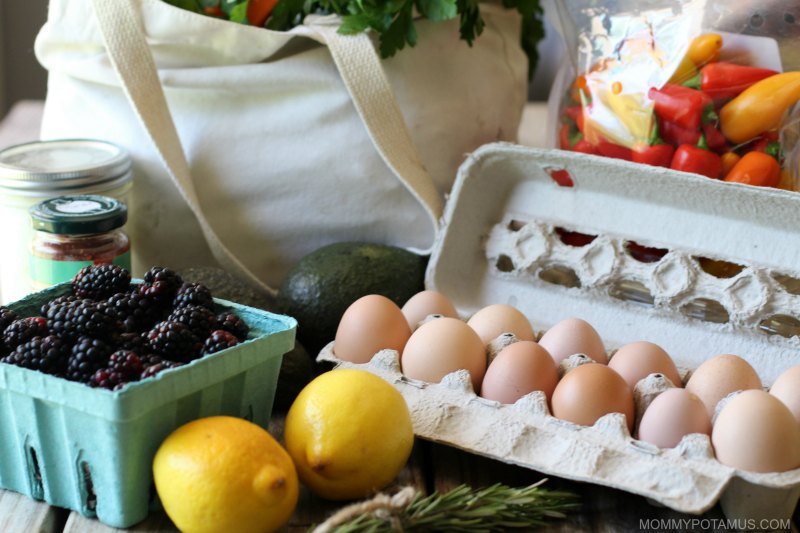
21 Tips for Eating Healthy On A Budget ^
As my family’s budget has changed over the years, we’ve used many different approaches to saving money. When my schedule is full and time is short I focus on ways to buy healthy convenience foods at wholesale prices, and when I have more time I make my own.
You’ll find a mix of strategies below that I hope will be helpful to your unique situation.
1. Put Scraps To Good Use
Instead of tossing veggie and fruit scraps, use them to create nutritious and flavorful broths, therapeutic teas, spice blends, cleaning supplies and more . . . all with just a tiny bit of effort, of course. Here are some ideas:
Lemon and orange peels can be used to make:
- Homemade lemon extract
- Lemon pepper seasoning
- Citrus-infused cleaning vinegar
- Limoncello
- Find more uses for lemon peels here
Veggie scraps:
Onion skins, carrot tops and skins, celery leaves, bell peppers, herb stems and leeks can be used to add flavor and nutrition (particularly minerals) to homemade broths:
One thing to keep in mind: Cruciferous veggies tend to make broth bitter so it’s best to avoid them. When simmered for a long time, green beans and zucchini can, too.
Banana peels:
Leftover banana peels can be used to make bedtime tea using this method. They’re rich in an amino acid that helps make serotonin (a relaxing neurotransmitter) & melatonin (often called the sleep hormone), and they also contain magnesium and potassium, which help to relax muscles.

2. The Scoop On Farmer’s Market Deals
In every town I’ve lived in since my children were born, I’ve made it a point to buy from local farmers when possible. I love supporting them directly and seeing their families grow as their little ones help out. I also love that because I’m a regular, they’ve taught me a few ways to save on produce.
After many years of being a regular at my local farmers market (or markets, really, since I’ve lived in a few places), here are some tips I’ve learned:
- Let your favorite farmers know that you’ll buy their ugly produce. I once bought 20 pounds of juicy organic tomatoes for $20 because the skins were a little bruised, which didn’t bother me at all because I planned to peel the skins and make stewed tomatoes.
- Swing by just before closing. I usually shop early to get some of my fave items, then run a few errands and swing back by on my way home. If farmers still have a lot of produce left and the market is about to close, they’ll often discount it so that they don’t have to haul it back home.
- Offer to buy a case. Sometimes this allows farmers to offer a 15-20% discount (or more!) that wouldn’t make sense for their business otherwise. I offer to buy cases when I’m planning for a large gathering or want to preserve/ferment seasonal produce.
3. No Farmers Market? Buy Ugly Produce Online
Misfits Market delivers organic produce directly to your door at a 40% discount. They sell imperfect, occasionally odd-looking fruits and veggies that won’t get sold in stores but fill the need for the budget conscious, healthy eating family.
Get 25% off your first box with coupon code COOKWME-IQ4XEZ

4. Make A Meal Plan
With just a little planning, you can save a lot of time spent standing in front of the fridge and wondering what to make for dinner. And you can save money, too, because instead of going to the grocery store and buying a bunch of extra ingredients that will go bad before you figure out what to do with them, you’ll go to the store with a detailed grocery list of what you actually need.
Here are some tips to get you started with meal planning, or you can save your afternoon and subscribe to Real Plans for as little as $1.50 a week.
If you’re not familiar with it, Real Plans is an app that allows you to choose what kind of recipes you want (paleo, gluten-free, keto, etc.), then customize even more based on food sensitivities and more. Then, when you have your meal plan just the way you want it, Real Plans creates a complete grocery list that you can pull up on your phone at the grocery store.
Click here to learn more about Real Plans
5. Prioritize The Clean 15
If it’s not in my budget to buy only organic, I prioritize healthy meats and fats (dairy and traditional cooking fats like lard and tallow), then produce.
Not all produce is the same, though. When grown conventionally, some absorb a lot of pesticide residue, while others retain undetectable or very low levels. The Environmental Working Group tests produce every year and puts out a Clean Fifteen / Dirty Dozen list which details the best and worst product to buy conventionally.
The Clean 15
Even when grown conventionally, these items tend to have undetectable or very low amounts of pesticide residue:
- Avocados
- Sweet corn*
- Pineapple
- Onions**
- Papaya
- Sweet peas (frozen)
- Eggplants
- Asparagus
- Cauliflower
- Cantaloupes
- Broccoli
- Mushrooms
- Cabbage
- Honeydew melon
- Kiwi
* Corn is not actually a vegetable, it’s a grain. And some sweet corn varieties are now genetically modified, so it’s a good idea to ask questions before purchasing.
** Although conventional onions don’t have a lot of pesticide residue, they are sometimes sprayed with an anti-sprouting agent (maleic hydrazide) to extend their shelf-life. Since I like to use onion peels and skins in my bone broth, I opt for organic onions.
The Dirty Dozen
These fruits and veggies tend to be highest in pesticide residue when grown conventionally, so I make sure to buy organically grown instead.
- Strawberries
- Spinach
- Kale
- Nectarines
- Apples
- Grapes
- Peaches
- Cherries
- Pears
- Tomatoes
- Celery
- Potatoes
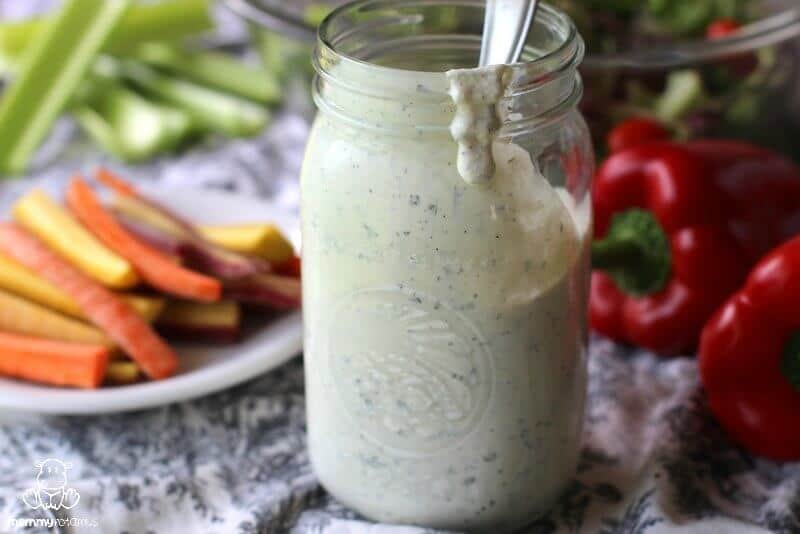
6. Eliminate Budget Busters
It’s not necessary to make everything from scratch, but it can be helpful to figure out what your budget busters – aka most expensive items – are and learn to make them. Expensive can mean a couple of different things here: What you spend the most on, or what’s most expensive in terms of cost per ounce.
Certain things – salad dressing for example – are pretty expensive on a cost-per-ounce basis, and super simple to make. Replacing just a few of the budget busters can lead to some pretty significant savings over time.
Here are some ideas to consider . . .
Condiments:
- Kid-approved ketchup
- Easy mayo
- Creamy caesar dressing
- 5 minute honey mustard
- Ranch dressing
- BBQ sauce
- Thousand-island dressing
- Teriyaki sauce
- Quick peach freezer jam
- Strawberry freezer jam
- Blackberry chia jam
Seasonings:
Store-bought breads:
Even “healthy” breads – gluten-free or not – often contain weird additives, so chuck them and and opt instead for these gluten-free/grain-free options or a simple no-knead sourdough that takes just minutes a day.
Any staples you use a lot of:
- Coconut yogurt is really easy to make
- There’s nothing quite like gluten-free sourdough bread (recipe coming soon)
- Can’t seem to stop eating Justin’s organic peanut butter cups? Make these instead.
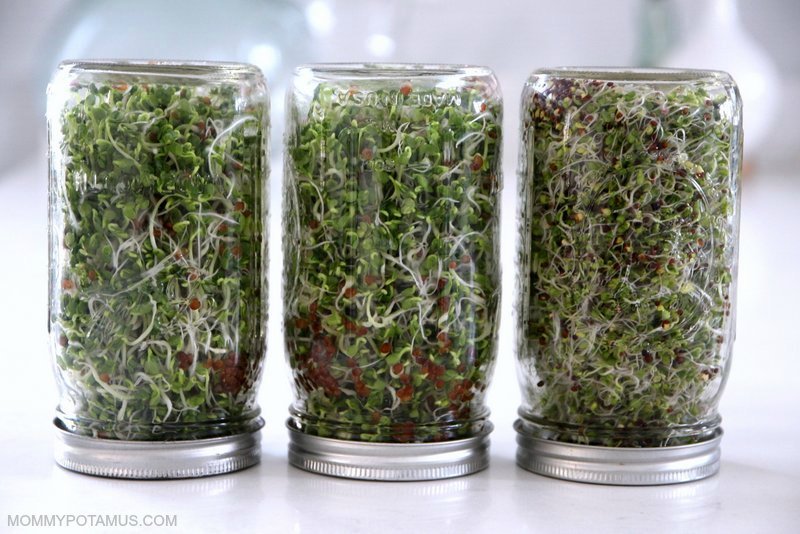
7. Grow Your Own (Even In Small Space)
There are several ways to grow healthy, fresh produce without planting a huge garden, although you can do that if you want to. (Here are my beginner gardening tips if you do.)
For example, you can grow fresh, nutritious sprouts in your kitchen without buying any special equipment. Broccoli sprouts in particular are rich in sulforaphane, which is a potent phytochemical with many benefits.
Also, you can grow salad greens in a pot on your patio/outdoor area. When you trim to harvest the leaves grow back, creating an endless supply for the season.
Herbs are also easy to grow both indoors and outdoors. Not only will freshly harvested herbs impart tons of flavor to simple meals, you can also dry the extra to use year-round. It’s much more affordable than those $5 containers at the grocery store.
8. Invest In An Instant Pot or Slow Cooker
Both provide a hassle-free way to transform inexpensive, tough cuts of meat like roasts into tender beef pot roast, pulled pork and more. No babysitting stuff on the stove or in the oven, just set and forget until mealtime.
Both are also great at making flavorful meals with other inexpensive ingredients that satiate while nourishing. Beans and lentils are both great in slow cooker chili, and oats can be cooked overnight for an easy, affordable breakfast.
I have an Instant Pot 7-in-1 Programmable Pressure Cooker that works as pressure cooker, slow cooker, rice cooker and yogurt maker in one. Unlike other products with iffy glazes or non-stick surfaces, the inside of the InstantPot is stainless steel.
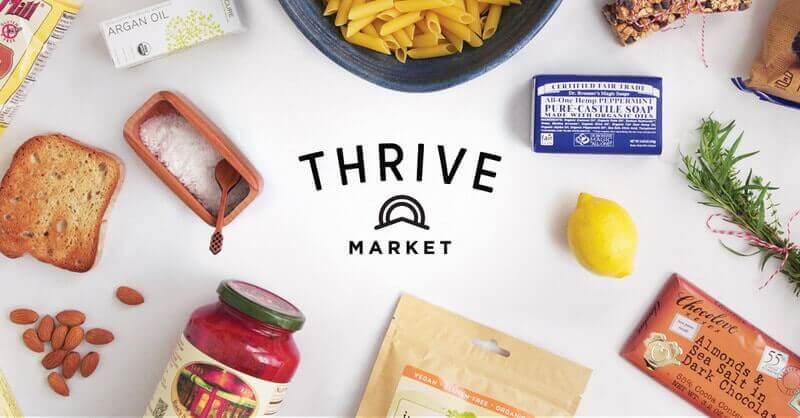
9. Get Wholesale Prices On Products Delivered To Your Door
Thrive Market is Whole Foods meets Costco, only you don’t even have to leave your house. For less than $5 a month ($59.95 annually), you can shop 3,500 of the world’s best-selling natural and organic products at 25-50% below retail prices.
If you’ve never heard of Thrive Market, I spent $59.85 on items that would have cost me $120.39 on Amazon.
Note: I believe so strongly in Thrive Market’s mission to make real food affordable that my family invested a small amount in their company when it was just getting started. It’s another way we’re choosing to vote with our dollars and increase access to healthy food.

10. Stock Your Pantry
When my favorite staples on are on sale, I buy extra to stock my panty. That includes more expensive items like good olive oil, plus inexpensive ones like sprouted quinoa and lentils.

11. Invest in A Dehydrator
One of the best ways to maximize great deals on produce is to stock up and preserve them for later. Tomatoes can be dried for a zesty addition to Italian dishes later and fruits such as apples can be dried into chips, etc. Here are the details:
- Easy baked cinnamon apple chips
- How to dehydrate bananas, strawberries, cherries and more
- How to make beef jerky in a dehydrator
- How to make zesty oven (or dehydrator) dried tomatoes
- How to make garlic and onion powder (for half of what you’d pay at the store)
- How to dry herbs like basil, sage, thyme, dill oregano, rosemary, marjoram, lemon balm and mint
How to choose a dehydrator:
My first dehydrator was a $10 garage sale find. I wanted to make sure this was a piece of equipment I would actually use before investing in something heavy duty. Sure enough, I wore out the motor in less than a year, so I began shopping around for a better one.
This is the one I got. It has plastic trays which I usually line with parchment paper. There’s a new dehydrator out that has stainless steel trays, which I would probably buy if I was shopping for one now.
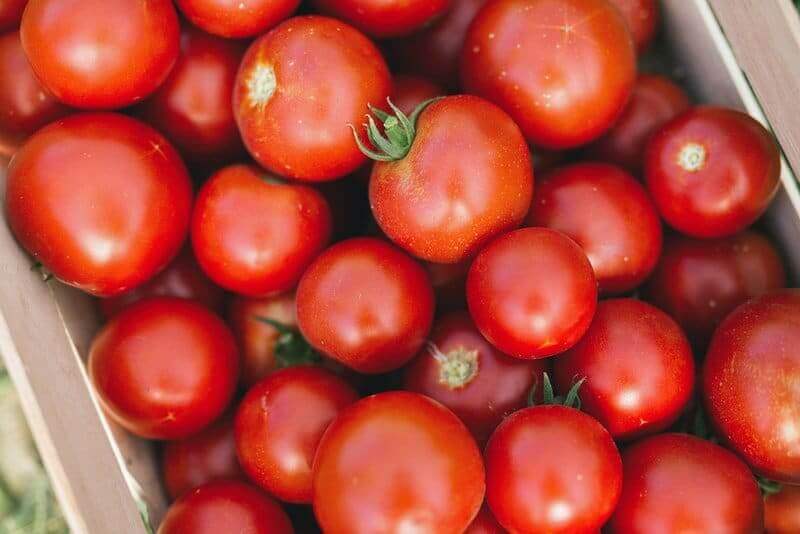
12. Join A CSA
Community Supported Agriculture (CSA) is a fabulous way for you to “own shares” in a local farm. Here’s how it works according to Local Harvest:
[A] farmer offers a certain number of ‘shares’ to the public. Typically the share consists of a box of vegetables, but other farm products may be included. Interested consumers purchase a share (aka a ‘membership’ or a ‘subscription’) and in return receive a box (bag, basket) of seasonal produce each week throughout the farming season.”
13. Invest In A Freezer
Meat is by far one of the more expensive items in my food budget, but buying in bulk can significantly reduce your cost per pound. Many years ago my husband and I invested in a standalone freezer to store our meat and other bulk purchases in, and it has paid for itself many times over.
A lot of produce, baked goods, and dairy can be frozen too. I’ve found that fresh fruits and berries, when frozen at the peak of freshness, are much more flavorful and affordable than berries that are imported in the off-season. They work beautifully in smoothies and even cobblers and crisps . . . this peach cobbler, for example. Learn more about which foods can and can’t be frozen here.
14. Keep Your Freezer Stocked With Meals . . .
For the days when things just don’t work out as planned, it’s pretty handy to have a backup meal or two. That’s why whenever I make freezable meals like chili, tortilla soup or Mexican-style beans I make a double batch and freeze half.
If you need more ideas, this grain-free freezer ecookbook from my friend Cara is awesome. Rather than requiring one long 10-12 hour cooking day, there are 5 sections that take 2-3 hours each so bulk cooking can be spread out over a weekend, a week of nap times, evenings, or whatever. When you wrap up you’ll have 22 breakfasts, 10 lunches, 16 dinners, 28 snacks/sides and 8 desserts.
15. Do A “No Spend” Challenge
For one week give yourself a personal “fridge and pantry cleanout” challenge to use every last item in the fridge, freezer(s), and pantry.
My husband and I are doing this right now and I’m always amazed at the meals we are able to come up with using the stuff we’ve been ignoring on the back shelf.
16. Host A Freezer Meal Prep Party
For many families, the biggest challenge to making budgets work is simply getting food on the table without resorting to eating out.
One way to get more done without missing out on social time is to coordinate a monthly freezer meal prep party with kids happily playing in another room (or helping out).
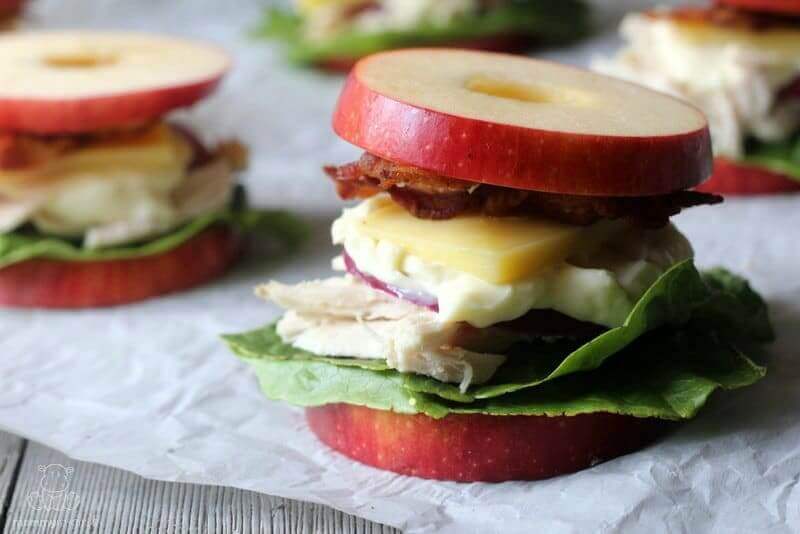
18. Be The Leftover Whisperer
Instead of roasting one whole chicken for dinner, roast two. It takes almost the same amount of time and effort, but you can use use the leftover chicken to make quick apple bacon sandwiches, chicken salad, lettuce wraps and more.
17. Help Out At A Farm or Farmer’s Market
If you have little ones that can help, too, this is a great way to teach them about sustainable agriculture and the value of food. Farmers often show their appreciation with boxes of extra produce and other goodies.

19. Make Your Own Fermented Foods
We all know that gut microbiome diversity is linked to overall health, so I make a point to get as many of the good guys into our bellies as possible. Sometimes that means taking a probiotic supplement, but when I’m up to it I prefer to get our beneficial bacteria through probiotic-rich foods such as:
- Homemade fizzy ginger ale and elderberry soda
- Thick and creamy yogurt
- Spicy kimchi
- Bubbly water kefir
- Tangy beet kvass
20. Make The Most of Affordable Staples
I’ve already touched on this a little, but when my husband and I need to tighten our budget we increase our use of affordable staples like:
- Dried beans (to make black bean dip, chili and refried beans)
- Lentils (for soups and stews)
- Quinoa (for stir fry)
- Sweet potatoes (for buffalo chicken stuffed sweet potatoes)
21. Learn Home Canning
Every year my mom brings me huge buckets of juicy tomatoes from her garden, which I dehydrate, and make into salsa, and serve with basil and feta for every single meal until they’re gone. But someday, I’m going to learn to can them using this awesome video class from Melissa Norris to use in soups and stews when tomatoes are out of season.
And then I’m going to take all the juicy summer peaches that are just a smidge bruised, on sale, and perfect for jam.
What did I miss? Share your tips for eating real food on a budget below!
(And of course, if you know a someone who is trying to save on groceries while eating healthy, please pass this along!)
